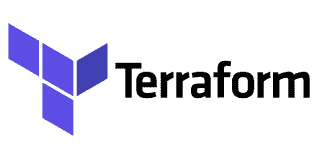Table of contents
- <mark>What's the difference bhaiyya?</mark>
- <mark>Task-01</mark>
- <mark>What is (IaC) Infrastructure as Code?</mark>
- Infrastructure as Code (IaC): Declarative vs Imperative
- IaC: Imperative
- IaC: Declarative
- <mark>When to use IaC</mark>
- <mark>What is Configuration Management?</mark>
- <mark>Terraform</mark>
- Ansible
- <mark>Give differences on both with suitable examples?</mark>
- <mark>What are most commont IaC and Config management Tools?</mark>
- 🛠️ IaC Tools
What's the difference bhaiyya?
When it comes to the cloud, Infrastructure as Code (IaC) and Configuration Management (CM) are inseparable. With IaC, a descriptive model is used for infrastructure management. To name a few examples of infrastructure: networks, virtual computers, and load balancers. Using an IaC model always results in the same setting.
Throughout the lifecycle of a product, Configuration Management (CM) ensures that the performance, functional and physical inputs, requirements, design, and operations of that product remain consistent.
Task-01
- Read more about IaC and Config. Management Tools
Write a blog on this topic in the most creative way and post it on linkedIn :)
happy learning...
What is (IaC) Infrastructure as Code?
The practice of supplying and managing infrastructure specified by code, as opposed to doing it manually, is known as infrastructure as code, or IaC.
Networks, virtual machines, load balancers, and connection topologies are managed using an Infrastructure as Code (IaC) framework. It makes use of the same versioning for source code that a DevOps team does. An IaC model produces an identical environment each time it is used, similar to how a key can only unlock a single door. In addition to being utilized in tandem with continuous delivery, it is crucial to the DevOps process.
Infrastructure as Code (IaC): Declarative vs Imperative
IaC: Imperative
Imperative – focus on the actual provisioning process and may reference a file containing a list of settings and configuration values
IaC: Declarative
Declarative – focused on the desired end state of deployment and relies on an interpretation engine to create and configure the actual resources.
When to use IaC
You use a large amount of IaaS resources.
Your infrastructure is rented from many different providers or platforms.
You need to make regular adjustments to your infrastructure.
You need proper documentation of changes made to your infrastructure.
You want to optimize collaboration between administrators and developers.
What is Configuration Management?
Configuration Management is the process of maintaining systems, such as computer hardware and software, in a desired state. Configuration Management (CM) is also a method of ensuring that systems perform in a manner consistent with expectations over time.
Originally developed in the US military and now widely used in many different kinds of systems, CM helps identify systems that need to be patched, updated, or reconfigured to conform to the desired state. CM is often used with IT service management as defined by the IT Infrastructure Library (ITIL).
Terraform
The top infrastructure as code (IaC) solution for managing infrastructure across a variety of clouds, including AWS, Azure, GCP, Oracle Cloud, Alibaba Cloud, and even platforms like Kubernetes and Heroku, is Terraform by HashiCorp.

While assuring the intended state throughout the settings, Terraform may be utilized to facilitate any infrastructure provisioning and management use cases across many platforms and providers.
Ansible
Ansible is a free, open-source configuration management solution with IaC capabilities rather than a specialized infrastructure management tool. It is an agentless solution that works with both cloud and on-premises systems and may be used by SSH or WinRM.

It has limitations when it comes to maintaining that infrastructure but shines at provisioning infrastructure and configuration management.
Give differences on both with suitable examples?
The main difference between Infrastructure as Code (IaC) and Configuration Management (CM) is that IaC focuses on managing and provisioning infrastructure through code, while CM focuses on automating the configuration and management of software applications, operating systems, and servers.
Infrastructure as Code (IaC) is a practice of managing and provisioning IT infrastructure through code. IaC allows teams to manage infrastructure in a repeatable, scalable, and automated manner. With IaC, infrastructure components such as virtual machines, networks, and storage can be defined as code, which can be version controlled, tested, and deployed like any other codebase.
Configuration Management (CM), on the other hand, is the practice of automating the configuration and management of software applications, operating systems, and servers. CM tools help teams automate the installation and configuration of software packages, enforce security policies, and manage system settings.
While IaC focuses on the infrastructure layer, CM focuses on the application layer. However, both concepts work together to help teams automate and manage their IT infrastructure more efficiently.
What are most commont IaC and Config management Tools?
🛠️ IaC Tools
IaC tools can help you automate and manage all infrastructure components like networks (VPC, Subnets, VPNs, Route tables, etc), servers, cloud-managed services, applications, firewalls, cloud & on-prem managed services, etc.
The popular IaC tools are Terraform, Pulumi, Ansible, Chef, and Puppet. Also, there are cloud-specific IaC services like Cloudformation, AWS CDK, etc.
Some common Infrastructure as code tools include:
Terraform - A tool for building, changing, and versioning infrastructure safely and efficiently.
CloudFormation - A service provided by AWS for defining infrastructure as code in AWS.
Pulumi - A tool for creating, deploying, and managing infrastructure on any cloud using your favorite languages.
Some common Configuration Management tools include:
Chef - A configuration management tool that automates the deployment, configuration, and management of software.
Puppet - A configuration management tool that helps automate the management of infrastructure, applications, and compliance.
SaltStack - A tool that automates the configuration and management of software applications, operating systems, and servers.
Ansible - A popular configuration management tool that can also be used for infrastructure automation. Ansible uses a declarative language to define infrastructure, making it easy to read and understand. Ansible can be used to manage both on-premise and cloud infrastructure.
Thank you for reading!! Hope you find this helpful.
#day54#90daysofdevops#devopscommunity#
Always open for suggestions..!!
